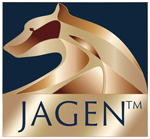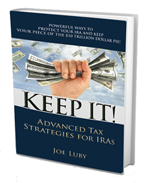Categories: Retirement StrategiesAs Seen In Investment Advisor Magazine, October 2010
By: Joe Luby, CFP®
A new and unique opportunity exists for advisors and clients to achieve significant investment and tax advantages. Cutting edge advisors that offer comprehensive solutions to their clients will appreciate the inherent advantages offered in a private investment fund (PIF).
Private investment funds can do all of the following in one convenient package:
• Provide access to institutional (i.e. non-retail oriented) portfolios, pricing, managers and opportunities
• Protect against investor “bad behavior” that can disrupt ongoing management
• Create accounts that stay with the advisor for a guaranteed period of years
• Provide opportunity for smaller investors to access portfolios that normally have prohibitively high account minimums (generally $5 million and higher)
• Give the ability to control capital gains tax implications in down years
• Create opportunity for customized solutions for a particular firm and/or group of clients
• Achieve significant tax savings on Roth conversions and other IRA distributions
• Achieve significant tax reduction for gift and estate tax strategies
Private investment funds can be customized to meet a variety of needs. In some cases, they will have the look and feel of traditional mutual funds albeit with some distinct differences. A PIF typically has a limited number of investors who each own some fractional interest of the fund. The investment model within the framework of the PIF can be designed and allocated to suit that particular group of investors’ needs. Another common element is a predetermined time horizon suitable to the targeted investors.
For example, an investment advisory firm may have fifty clients that all fit a specific profile. These clients have a similar time horizon and investment objective. The firm could use a PIF designed specifically to meet their needs and only invest those clients in the fund.
PIFs are designed for the long-term investor who wants to truly commit to a specific portfolio and/or objective for a predetermined amount of time. The concept is similar to a closed end mutual fund owned by a limited number of like-minded investors. Each PIF carries a specific time horizon that may be as short as three years and can be much longer depending on the specific group of investors and their common goals. PIFs are generally not suitable for active traders, market timers or clients with investment horizons shorter than the fund term. They are not suitable for dollars the client is likely to need for living or other expenses during the term of the fund.
Most advisors recommend taking a long-term approach to money management and investments. As a group, they tend to leave the active trading decisions to professional money managers via separately managed accounts, mutual funds, etc. Many are specialists in modern portfolio theory and asset allocation strategies and with good reason. Investment success is more likely for most of us when we take this approach. No one has the ability to be right consistently via market timing and trading activity. Investments don’t always move in the direction one thinks or hopes they will. Thus it is more common to find advisors that create asset allocation models and select mutual funds or other investment products to fill the various asset classes within a desired portfolio.
The last two years taught advisors that despite all their discussions with clients about long-term performance expectations, individual investors can and will make short-term emotional decisions about their money. Over the five quarters ending March 31, 2009, long-term equity mutual funds experienced a net outflow of $410 billion (Investment Company Institute, Worldwide Mutual Fund Assets and Flows Statistics, dated 01/27/2010). This kind of outflow and redemption activity wrought havoc on fund managers who were also dealing with a very difficult investment environment at that time. Managers were often forced to liquidate positions at deep losses or sell into illiquid and declining markets. A PIF, with its specified investment term or time horizon, is one solution for both the client and advisor.
At first glance it may seem a drawback to commit funds for a certain period of time. But for an investor with a longer time horizon (typical timeframes are 3-5 years), investing alongside other committed investors for mutual gain and profit can be very attractive. Anyone who has ever put funds into a retirement account, purchased an annuity, long-term CD, private REIT and other similar holdings has already shown a propensity for and comfort with long-term holdings.
The following are examples of investment advantages provided by properly designed and utilized PIFs:
• Consistent fund asset size due to restrictions on liquidity or redemptions by investors during the term
• Manager can take a true long-term investment approach without worrying about managing for cash inflows and outflows
• More potential for consistent results when asset sizes do not fluctuate except via fund performance
• Ability for the advisor to customize the fund portfolio
• Capital gains may be controlled and recognized when advisable rather than generating taxable gains even in years when the fund shares lose value
• Funds/accounts are not easily transferred to other advisors depending on the PIF design (Note this is an advantage to the advisor, not necessarily the client depending on circumstances.)
• Significant tax reduction opportunities for Roth conversions, RMDs and other IRA distributions
• Significant tax reduction opportunities for gift and estate planning scenarios
PIFs can often gain access to the institutional and high minimum account size portfolios not generally available to individuals through retail outlets such as SMAs, open end mutual funds, etc.
Money managers generally prefer closed end type funds over daily liquidity funds. They love not having to deal with constant fluctuations in assets and cash flows. And since PIFs typically have fixed terms such as three, four or five years, the manager knows that the account is “sticky.” This structure allows them to take a true investment management approach without worrying about cash reserves for redemptions and being forced to buy or sell at a bad time. If capital gains are generated, even in an otherwise down year, the fund has the option of making a cash distribution to investors to cover the tax bill or recognizing losses to offset the gains.
PIFs are generally limited partnership or limited liability company structures adhering to partnership taxation status. They are private placement investments under the SEC rules and thus are generally only available to accredited investors with relatively high account minimums ($100,000 – $1 million is typical).
By definition, PIFs are not traded publicly on an exchange and do not have readily ascertainable quotations of value or prices per unit. Thus the funds must be appraised regularly in order to determine the fair market value (FMV) of the interests owned by investors. PIFs actually have two different values at any given time including FMV and net asset value (NAV). NAV is fairly straightforward and simply measures the total value of the underlying portfolio divided by the total units outstanding. FMV takes into account a variety of factors based on the fact that investors hold an illiquid minority interest in a private fund that is not readily marketable on an open exchange. It is common for appraisers to apply valuation adjustments (discounts) when valuing such an asset. Depending on circumstances, a typical adjustment may be 25% – 35% from the fund’s NAV. For example, a 30% adjustment would result in a FMV of $70 on a fund unit with a NAV of $100.
FMV is important as it is the value required to be used for all tax reporting purposes. Any taxable transaction involving the PIF units owned by an investor must be reported at the accurate FMV as required by the Tax Code. These include gifts, estate valuations, transfers to charitable lead trusts (CLTs), transfers to grantor retained annuity trusts (GRATs), installment sales and/or gifts to intentionally defective grantor trusts (IDGTs), Traditional to Roth IRA conversions, Traditional IRA required minimum distributions (RMDs) and many more. And therein lays the tax advantages that may be gained by investors holding PIF interests.
Consider the following Roth conversion situation. A client converts her $1 million Traditional IRA to a Roth IRA resulting in federal tax at today’s top bracket (35%) of $350,000. Now assume the client’s Traditional IRA held $1 million NAV PIF interests prior to the conversion and that the FMV of those interests is $700,000 as determined by the appraiser. She then completes the Roth conversion resulting in only $245,000 of tax due to the reduced income reported on the 1099R from the conversion ($700,000 taxable FMV x 35% tax = $245,000). This client has effectively locked in a maximum 24.5% tax rate on their conversion instead of the actual top bracket of 35% ($245,000 of tax / $1 million IRA NAV = 24.5% effective rate)
Take the Roth conversion opportunity. Assume a client with a $1 million Traditional IRA. If he does a Roth conversion while the IRA holds traditional open end funds or cash, he will receive a 1099R from the IRA custodian reporting $1 million of taxable income. At a forty percent federal and state combined tax rate, he will owe $400,000 in income tax.
His brother has a $1 million Traditional IRA which he invests in one or more private funds. The appraised FMV reflects $700,000 at the time of conversion. He gets a 1099R from his IRA custodian reporting $700,000 of taxable income which results in a tax bill of only $280,000 using the same forty percent tax rate. But ultimately, this client still has the same $1 million NAV as the brother above and will enjoy the same tax free treatment of those dollars in retirement under the Roth distribution rules. However, he saved $120,000 of income tax on the overall transaction.
Private funds that achieve the above described valuation adjustment between NAV and FMV can be used in multiple gift and estate tax planning scenarios including GRATs, charitable lead trusts, intentionally defective grantor trusts, installment sales, etc. Anytime there is a tax efficiency to be gained via the arbitrage between NAV and FMV, such funds may be a good fit. This is always provided that the investment objective and time horizon of the fund is also a good fit for the client.
Private funds are a very specialized business and the “devil is in the details” as they say. Companies such as Jagen™ Investments create and operate a series of private funds with the characteristics described and available to advisors and clients nationwide. They can also work with advisors and firms to build private label or exclusive funds available only to that advisor or firm’s clients. Companies generally require a commitment of $25+ million in client assets in order to create exclusive fund offerings.
Private investment funds not only offer significant opportunities for clients, but also for advisors. Advisors that are able to bring advanced solutions to their clients and prospects are invaluable. Advisors that are able to bring the investment and tax efficiencies offered by private funds to their clients and prospects will grow their businesses substantially in 2010.


